A poster of the planets to scale (from true color NASA images)
After creating a scale model of the inner solar system for the Alma College viewing party for the 2012 transit of Venus, I decided to design a large (48"x36") poster of the planets in our solar system for use at our campus planetarium (now updated with New Horizons images of Pluto):
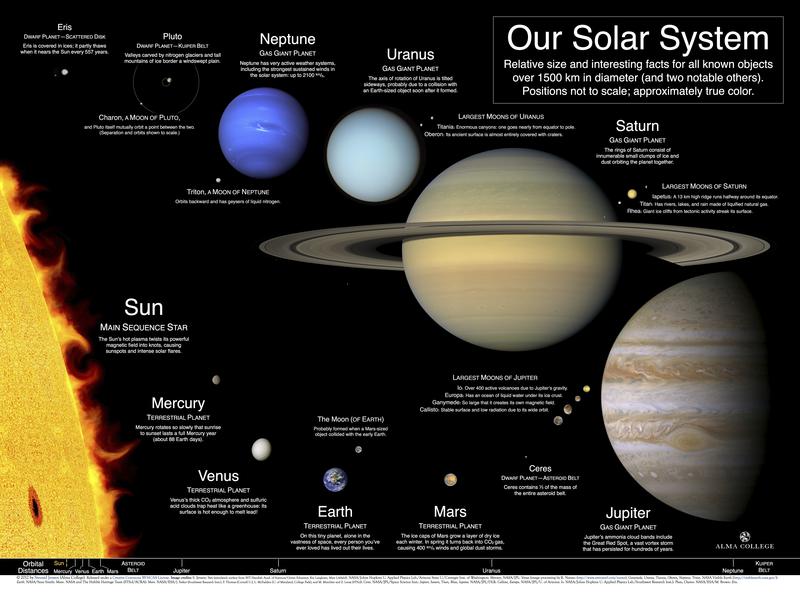
 Free PDF downloads: 48"x36" (4:3) version or 48"x32" (3:2) version.
Free PDF downloads: 48"x36" (4:3) version or 48"x32" (3:2) version.Buy a fabric poster at Spoonflower.
A display-quality 55"x36" poster
that a kid could even play with on
the floor, without worries about
tearing or wrinkling.
Select "performance piqué" fabric, one "Yard"
size.
As of January 2024, the price is $29.
Be sure to choose the correct aspect ratio for the size
you want! Readability and image quality are best for poster
widths between 24" and 48". Many poster printers will still do
fine at larger sizes, but
I recommend that you not go much smaller.
As of January 2024, prices start around $25 for a 24" poster,
while a full 48" version is around $70-80.
The full 3.2MB PDF of Our Solar System by Steuard Jensen can be downloaded freely for non-commercial use under a Creative Commons Attribution-NonCommercial-ShareAlike 3.0 Unported License. Individuals or educational institutions that want a physical copy are welcome to print one or to pay a commercial printing company to do so; the versions on Spoonflower and Zazzle should be quite good. The original poster has a 4:3 aspect ratio, but I have also made a 48"x32" version (a 3:2 aspect ratio) that still looks quite good; the 3:2 PDF file is available under the same terms. (If you'd prefer not to include the Alma College logo, those same terms also govern this no-logo 4:3 PDF and this no-logo 3:2 PDF). The JPG images of the full posters on this page can be used on other sites as long as attribution and a link back to the primary poster page page are provided as noted below.
For attribution (including Creative Commons usage), please give credit to "Dr. Steuard Jensen (Alma College)" or a similar phrase, and link back to the primary poster page.
My goal with this poster is to convey a sense of scale while showing off some beautiful images, and to share some neat facts along the way. Too many posters like this just list dull numerical data for each planet; I wanted something more interesting. (Would you rather know that Europa has a mass of 4.8x1022 kg or that it has a liquid water ocean under its icy crust?)
The choice of objects to include was inevitably a bit arbitrary. Ceres and Charon are the "two notable others" in the poster's overall description. It's still important to include Pluto (people will be puzzled or disappointed if you don't), but that essentially requires you to include Charon (since they're arguably a double planet) and Eris (since it's bigger). It felt odd to include representatives of the Kuiper belt and the scattered disk without mentioning the asteroid belt anywhere, so I also included Ceres (one of the original dwarf planets). I feel a little bad for omitting Sedna (such an interesting object!), but I'd rather avoid too much clutter with the many other official and likely dwarf planets. As for moons, I arbitrarily chose my size cutoff to be just under 1500 km in diameter, largely because I really started running out of unique and interesting facts at that point. (I originally planned to stop at 2000 km, but that left Saturn and Uranus looking unreasonably lonely.) And yes, that's a tiny picture of the Sun (to scale) embedded in the initial line of the Orbital Distances section.
The pictures (except the Sun) are all taken from actual NASA data in more or less true color as you might see them. (That means I've had to leave out some interesting but hard-to-see features like the rings of Uranus and the other gas giants or detailed cloud bands on Uranus and Venus, but for this poster accuracy trumps art.) A few have been flipped horizontally to create a consistent shadow direction, and all have been adjusted to the same scale. At the original 4'x3' size, the scale is 3.5x108:1 (or 5500 mi/in). Even at this size the resolution is quite respectable: two images (Saturn and Uranus) are around 120ppi and everything else ranges from 150-600ppi. (600ppi is easy when most images are scaled so small.) The main body fonts are 20pt and higher, so even at half size it should be perfectly comfortable to read. At full size (48" wide), both versions effectively have a 1" border on all sides (the interesting parts of the Sun are farther in; also, in the 3:2 version the image credits at the bottom are in the border area).
Finally, I'll preemptively answer a question that a few people have asked: why do I use the phrase "liquified natural gas" when describing Titan? My first draft actually said "liquid hydrocarbons" instead, but I worried that word was a bit too technical. On the other hand, most people do know about natural gas, which (before purification) is precisely a mix of hydrocarbons, so it seemed like a decent fit (even if it's a slightly awkward phrase). NASA's Astronomy Picture of the Day has used a very similar description when talking about Titan, so I feel pretty much okay with it.
Best available solar system images
For anyone else looking for good pictures of the planets and other solar system objects, here's a list that I compiled while making the poster. These are the "best available" images that I've found by my own quirky standards: I've insisted on color images (preferably as close to true color as possible), I prefer high resolution, and in general I prefer fewer restrictions on how the images can be used. I tracked down many of these images using NASA's Photojournal site, though not all of them are listed there. Wikipedia's List of Solar System objects by size was also helpful (and most image files there link to the original sources).
In the list below, I have included my notes on the approximate size and scale of the object in the photo and on the license terms and image credits, but you should always verify those details yourself before use. ("Diameter" is my measured diameter of the spherical object; you can find the full image dimensions yourself.) Click on the image thumbnails to go to get the full image from the original source. (In most cases, that's a NASA page with a detailed description.) Although most of these are NASA public domain images ("PD", below), they still request that you provide an appropriate image credit.
| Object | Image | Diameter | km/px | License | Image credit [and notes] |
|---|---|---|---|---|---|
| The Sun | |||||
| Sun | [23400px] | 59.4 | CC-BY | Image by Steuard Jensen, using data from the Swedish
Solar Telescope (operated by the Institute for Solar
Physics of the Royal Swedish Academy of Sciences;
observations by Göran Scharmer and Kai Langhans, image
processed by Mats Löfdahl). [The solar surface texture is based on an actual (colorized) visible light (continuum) image of a sunspot and the surrounding solar granules, but I made enormous and probably untrustworthy modifications while composing the final image. It was assembled using POV-Ray and the GIMP. If you ever see a real photo with similar features and scale, please let me know!] |
|
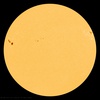 |
3784px | 368 | PD | NASA / SDO / HMI [Intensity based on iron's spectral line; "flattened" version: see "View full disk image" at bottom of linked page. Live data is at the SDO site; refer to the "HMI Intensitygram - Flattened" image.] (Great images, but the resolution is far too low at poster scale.) |
|
| Object | Image | Diameter | km/px | License | Image credit [and notes] |
| Mercury | |||||
| Mercury |  |
956px | 5.1 | PD | NASA / Johns Hopkins University Applied Physics
Laboratory / Arizona State University / Carnegie
Institution of Washington [The original image gives three different color reconstructions. I liked this one, from the upper right.] |
| Venus | |||||
| Venus |  |
445px | 27.2 | [Note] | NASA / JPL / Ricardo Nunes. [Can be used for any purpose, if accompanied by the text "Image processing by R. Nunes" and a link to http://www.astrosurf.com/nunes.] |
 |
3281px | 3.7 | ??? | NASA / JPL / Mattias Malmer [No clear license; contact author for permission. (Including a low quality thumbnail in this image review is permitted under fair use.) UV data was used in creating the image, so it may be less accurate.] |
|
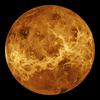 |
3688px | 3.3 | PD | NASA / JPL [Simulated surface from radar altitudes; surface color taken from images by the Soviet Venera lander. If you're willing to fib, I've had GIMP make up realistic terrain for some missing data. (CC-BY)] |
|
| Earth | |||||
| Earth | 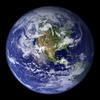 |
1785px | 7.1 | PD | NASA Visible
Earth: 2002 Blue Marble [Eastern hemisphere also available.] |
| Mars | |||||
| Mars | 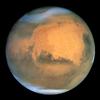 |
441px | 15.3 | PD | NASA and the Hubble Heritage Team (STScI/AURA) |
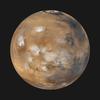 |
1908px | 3.5 | PD | NASA / JPL / MSSS [Global photographic map wrapped onto a sphere by computer.] |
|
| Object | Image | Diameter | km/px | License | Image credit [and notes] |
| Jupiter | |||||
| Jupiter |  |
2225px (polar) |
60.1 | PD | NASA / JPL / Space Science Institute |
 |
996px (polar) |
134 | PD | NASA / JPL / University of Arizona [Includes shadow of Europa.] |
|
| Saturn | |||||
| Saturn | 1555px (polar) |
69.9 | PD | NASA / JPL / Space Science Institute [Includes Titan and several smaller moons.] |
|
 |
3186px (equator) |
37.8 | PD | NASA / JPL / Space Science Institute [High resolution, but top hemisphere substantially shadowed.] |
|
| 428px (polar) |
254 | PD | NASA / JPL / Space Science Institute [Less practical for my purposes, but astoundingly beautiful. And Earth is visible just above the bright rings on the left! Awesome!] |
||
| Uranus | |||||
| Uranus | 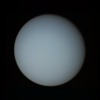 |
722px | 69.8 | PD | NASA / JPL [I increased this image's saturation and contrast a bit for the poster, since it was less vivid than most that I've seen.] |
 |
476px | 106 | PD | NASA / JPL / STScI [The pixelated bands here are probably not clouds but just brighter sunlight. The other image on the NASA page (taken with a narrow color filter) shows the actual cloud band direction.] |
|
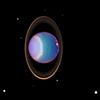 |
696px | 72.4 | PD | NASA / JPL / STScI [False color using Hubble's IR camera, but shows the planet's tilt, cloud features, rings, and many moons. Almost worth the false color.] |
|
| Neptune | |||||
| Neptune | 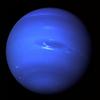 |
1912px (polar) |
25.6 | PD | NASA / JPL [Recent reprocessing has shown that Neptune's blue color is much less vivid than shown here, but the updated images so far are much lower resolution. I'm hoping to find a better option soon.] |
| Object | Image | Diameter | km/px | License | Image credit [and notes] |
| Ceres | |||||
| Ceres | 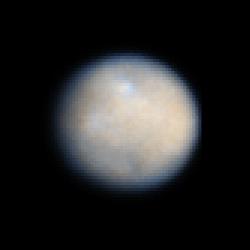 |
139px | 6.9 | PD | NASA/ESA/J. Parker (Southwest Research Institute), P. Thomas (Cornell University), L. McFadden (University of Maryland, College Park), and M. Mutchler and Z. Levay (STScI) [This image from Hubble in 2003-2004 is one of the only color images of Ceres yet released by NASA. It is not entirely clear how true the color is, as both visible and UV light were used in constructing it. Also, the sharpness was enhanced to bring out surface features. But at the size of Ceres on this poster, this is still the best option.] |
 |
800px | 1.1 | PD | NASA/JPL-Caltech/UCLA/MPS/DLR/IDA [This beautiful image from the Dawn spacecraft is fantastic, but it is greyscale rather than color. (Even though I don't know how much to trust the Hubble color data, without it this image is nearly featureless when scaled down to poster size.)] |
|
| Pluto | |||||
| Pluto | 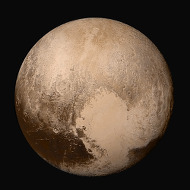 |
840px | 2.8 | PD | NASA/Johns Hopkins University Applied Physics
Laboratory/Southwest Research Institute [This image from New Horizons is excellent, but note that it currently lacks high resolution color data along its lower right edge.] |
| Charon | |||||
| Charon |  |
712px | 1.7 | PD | NASA/Johns Hopkins University Applied Physics
Laboratory/Southwest Research Institute [Another beautiful New Horizons image.] |
Finally, here's a good picture of Earth's moon that actually has an explicit NASA credit and is thus (as far as I can tell) governed by the NASA image use policy.
Up to my teaching page.
Up to my professional page.
My personal site is also available.
Any questions or comments? Write to me: JensenS@Alma.edu
Copyright © 2012-24 by Steuard Jensen.